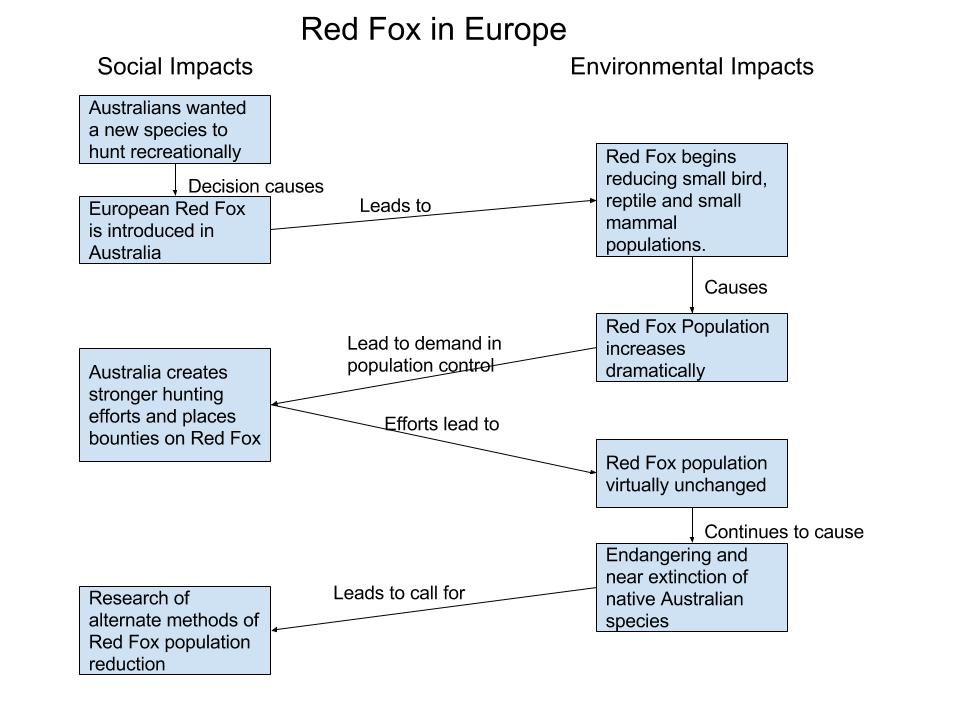1. Identify one aspect of H.I.P.P.O. within Pennsylvania. In 150-300 words describe what impact this occurrence has on the biodiversity of the habitat it is affecting. Be sure to include a link of your source information.
2. Now Identify a similar occurrence of H.I.P.P.O. in a foreign country. For example, if in Question 1 you spoke about pollution give another example of pollution in a foreign country. Describe the impact on the biodiversity of that environment and compare it to the situation in Question 1. Do this in 250-400 words. Be sure to include a link of your source information.
3. Pick an aspect of H.I.P.P.O. from one of the above questions and create a social and ecosystem impact diagram. Be sure to link the social aspects with the environmental impacts to form a flow. Include any possible solutions to the situation that are already in the works, or a solution that you would suggest for creating harmony between the social and environmental aspects of the situation. Label each connection between boxes in your diagram as well.
1. I chose to identify an occurrence of invasive species in Pennsylvania. Invasive species have an impact on the biodiversity of a habitat because the invasive species may out compete against the native species of an area causing regional extinctions. I chose to analyze the Round Goby species introduced into the Great Lakes including Lake Erie. Round Gobies compete with native bottom dwelling fish like Sculpins and Darters. However, there are out competing these species causing the native species to have to relocate from preferred habitats and spawning spots. Round Gobies do provide a positive impact in that they eat another dangerous invasive species known as the Zebra Mussel. As for the Round Goby’s impact on biodiversity it is at the moment neutral, but in the long term will lead to various issues. These Gobies are forcing out the native species which is making areas like Lake Erie slightly less diverse, but the reduction of the Zebra Mussel population due to the Gobies also helps keep the waters diverse. There is also an impact on humans due to the Gobies as well. Because they eat Zebra Mussels which are filled with toxins, there is a greater risk of fisherman catching and eating the Gobies and ingesting those same toxins. If the spread of the Round Goby species is not stopped, many native fish species will be forced out of the area causing major biodiversity impacts on Lake Erie and other Pennsylvania waters.
Link to information:http://www.protectyourwaters.net/hitchhikers/fish_round_goby.php
2. I chose to examine a particular case of invasive species in Australia. The Red Fox was introduced into Australia in the early 1870’s for hunters to enjoy harvesting. However, Australia has a large population of rabbits as well which provided for a good food source to expand the fox population. The biodiversity of Australia is affected immensely because of the ever spreading population of fox. Red Foxes pray on native Australian species like birds, small mammals and even reptiles. The recovery efforts of the malleefowl, the bridled nail-tail wallaby and the night parrot are being directly affected by the presence of Red Fox in Australia. Australia has even gone as far as listing the predation of the Red Fox is listed as a “key threatening process” under the Commonwealth Environment Protection and Biodiversity Conservation Act of 1999. This is because the Red Fox is causing the biodiversity of native species in Australia to decline.
There are similarities between the situations in Pennsylvania involving the Round Goby and the Australian Red Foxes. Both are causing negative effects on the biodiversity of the habitats they populate. Each are invasive and are out competing the native species for food. This in turn has caused rapid population expansions and the forcing out of native species. There are a few differences as well. In Australia, there have been active attempts to reduce the Red Fox population through hunting and even bounties. These have not been effective. When it comes to the Round Goby there has not been much effort to reduce the population. Many think that the positive effect the Gobies have on reducing Zebra Mussels warrants no immediate action. Furthermore, The Gobies were only discovered in North America in 1990. In a short time they have expanded into a large population, but the reach of the Gobies has not gotten too much farther than the Great Lakes, and some tributaries of the Mississippi waterways. However, the Red Fox in Europe has spread throughout the country and was introduced over a 100 years before Gobies were even discovered in the U.S. Without control of both of these populations, major implications can be made for negative effects on the biodiversity of both Pennsylvania and Australia.
Link to Red Fox information: http://www.environment.gov.au/system/files/resources/1910ab1d-a019-4ece-aa98-1085e6848271/files/european-red-fox.pdf


Hi my name is Ryan and a link to my blog is here if you are interested.(http://geog030.dutton.psu.edu/2016/04/15/module-10-biodiversity-10/)
You chose to focus on invasive species while I discussed pollution and habitat loss. I chose to reply to your article because I have fished on Lake Erie and your article about the invasive species there interested me. I had no idea about the invasive species there and their affects on the ecosystem. I also thought your Red Fox paragraph was interesting because it is similar to the situation happening in Erie.